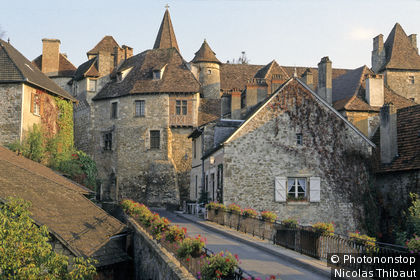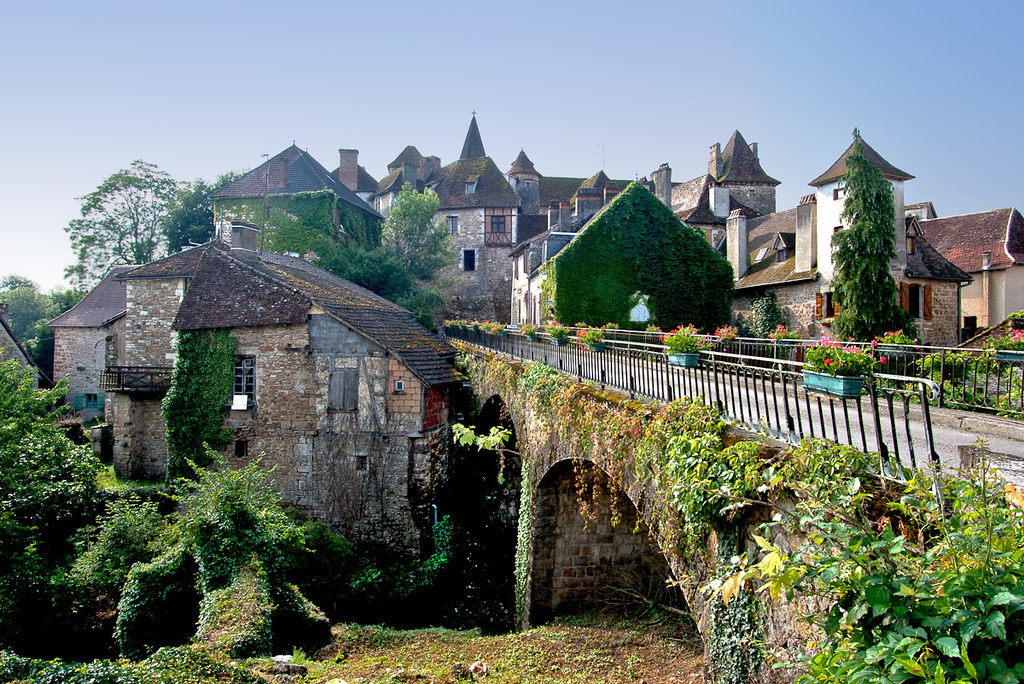Carennac
Carennac is a commune with 397 inhabitants (as of January 1, 2011 ) in the department of Lot in the Midi-Pyrénées region. The village is situated directly on the banks of the Dordogne, and approximately 25 kilometers east of Souillac.
Especially because of its picturesque and well kept local image, it was declared by the association Les plus beaux villages de France one of the most beautiful villages in France. Motor vehicles remain outside back against the closed buildings. The place is known among enthusiasts and connoisseurs of historic architecture for its abbey and the tympanum of the Narthexportals his church and its well-preserved condition.
History
The rocky terrace overlooking the left bank of the Dordogne, on which is Carennac was already inhabited by Gallo- Roman times to the early Middle Ages. Longer lasting possession claims there was, however, only with the founding of the Priory of Carennac to 1047th The development of the monastery and its buildings were under the supervision of the Benedictine abbey of Moissac. Later it belonged to the Cluniac church association.
The priory was growing rapidly and also wealthy. In the 13th century its prosperity had consolidated to the extent that it became a dean's office. The monastic settlement developed around the core of the priory. These included a port on the Dordogne and three mills. In the nearby limestone quarries facilitated the construction activity.
In the period of the Hundred Years' War, the village was destroyed and only in the second half of the 15th century houses and cloister of the monastery were rebuilt. Here, over the next 100 years kept the style elements of the Renaissance collection in Carennac and along the northern flank of the church bought the residence of the Deans. Protected by fortifications remained village and monastery unmolested during the religious wars.
After the guiding influence of Moissac and Cluny had declined significantly over time, the Priory finally originating from the Périgord family Salignac- Fénelon went into the possession of the 17th century. The best known member was François Fénelon, who later became Archbishop of Cambrai. From this period the last structural embellishments to the residence before the next century began the decline of village and monastery.
In the aftermath of the French Revolution, the monastery buildings were sold and used for agricultural purposes. Only in the 20th century, people began to restore the dilapidated buildings. Today these buildings are in the hands of the civil parish, and together with the houses of the village and some adorned with turrets manor houses an impressive urban ensemble.
Church
- See Saint- Pierre de Carennac
Village
To the abbey group the old houses of the village from the 15th and 16th centuries, which has conserved its medieval ambience largely and is maintained accordingly. With the extended alley to the place in front of the church entrance and access to the abbey buildings give it even a small center of old four-storey residential buildings, supplemented by even higher tower buildings and recognizable weirs. Together with a similar arc gate passage through which the Narthexportal the Church presents itself as photogenic, this is the first cell of a fortified village ( castrum ) with small urban building structures. The central tower of the church has on its mural crown battlements, indicating a defensive tower. There is also east of the church remains of defensive walls with round towers ( See photo at the top)
Not least, the location on the unspoilt Dordogne increase along with the island of Calypso bathed in her still the appeal of the pretty village of image.
Tower north of St. -Pierre
Stair tower, where?
Dordogne- shore
Door detail
Antique window
Houses
Residential tower
Main Street Center
Houses and towers









